In-Depth Analysis of Bayer Leverkusen - Xabi Alonso's Playing Style
Se quiser ler este texto em pt-br, clique aqui.
Introduction
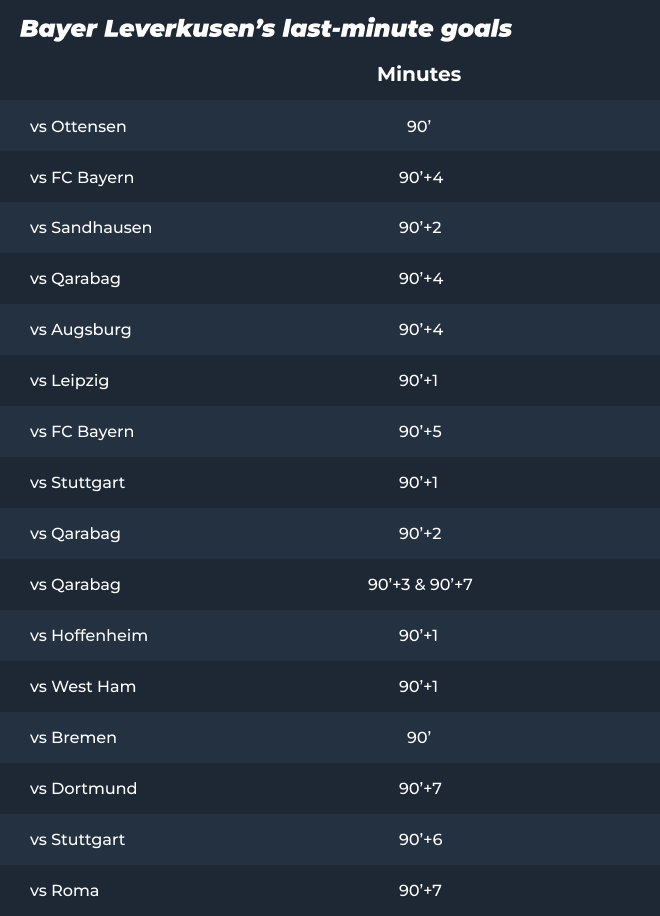
What is Xabi Alonso’s playing style?
Xabi Alonso, a former player who has won every possible title and is known for being extremely technical and analytical, worked with gigantic teams and excellent coaches like Mourinho, Guardiola, and Ancelotti. Each with their different styles, Xabi managed to absorb the best qualities from each, becoming a great communicator, strategist, and football enthusiast. After completing the UEFA course, he started in Real Madrid's U-14 team and soon moved to Real Sociedad B. There, technical skills and ball control were the focus, and the club was promoted to the second division for the first time in 60 years. From there, Bayer Leverkusen saw in Xabi someone who could save the team from the critical situation of relegation, and history began to be made. But how does Bayer Leverkusen play now, having been led by Alonso for over a year?Bayer Leverkusen without possession
In the defensive sector, Alonso's team applies high pressure during the opponent's build-up in a mid-block, forcing errors to regain possession. Depending on the match, the German champion can adopt two different formations while defending: a 5-2-2-1, pressing the opponent's build-up with five players, crowding the midfield, and forcing plays to the sides of the field where the wing-backs press and win the ball; or a 4-2-3-1, which allows for an easier transition out of defense after stealing the ball.Additionally, Leverkusen employs counter-pressing, commonly known as Gegenpressing. Xabi needed only a few months to shape and solidify this defensive tactic, establishing one of the most robust defenses in the league. By the end of the Bundesliga, they had achieved nearly 54 recoveries per match using this tactical approach.

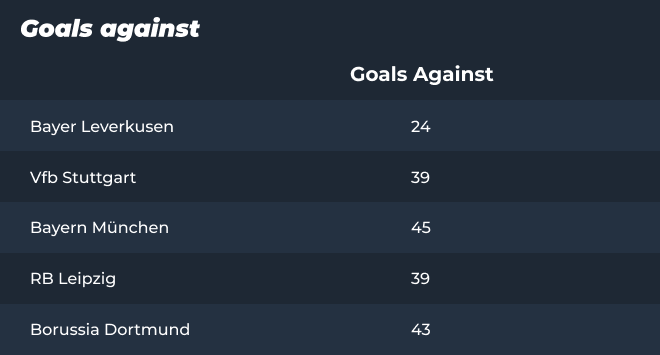
Bayer Leverkusen with possession
Classified as a middle ground between Pep Guardiola's positional play and the relational play seen in Fernando Diniz's Fluminense, Xabi Alonso trains the team for a build-up that depends on the current formation on the field. The playing style, which involves many passing exchanges, is evident in the team's passing network, where we can see the formation of "triangles" that allow multiple options for a player to work the ball.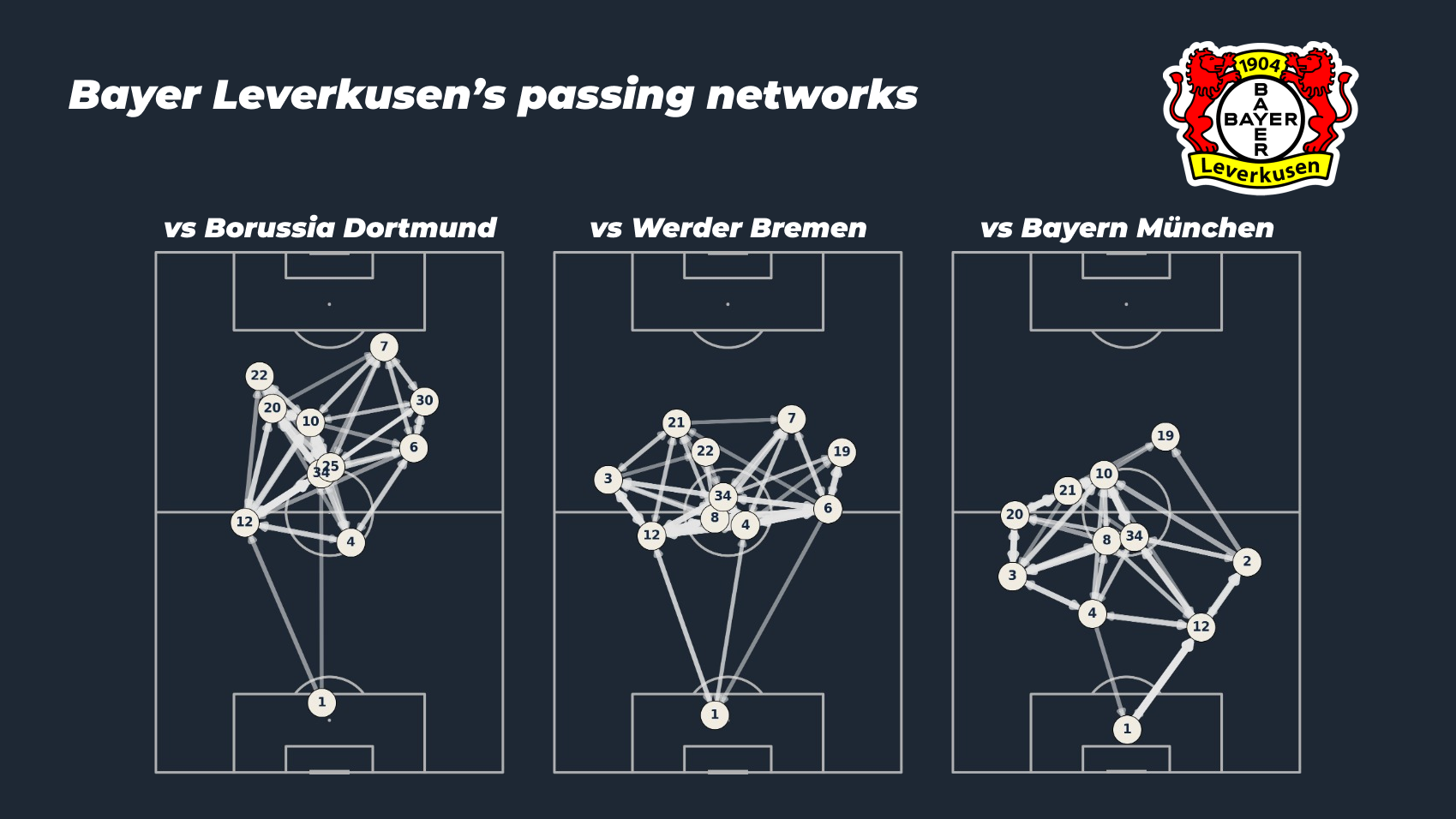
In that way, the wing-backs have a much more significant role in the game, both offensively and defensively, switching sides of the field while attacking and defending. This can be observed in the passing network from the match against Augsburg, where wing-back Frimpong appeared more advanced than any other Bayer player.
By employing this tactic, Xabi Alonso has maximized the individual technical skills of his wide players, such as Frimpong and Grimaldo, who have contributed to 39 goals in the Bundesliga. In other words, nearly half of the team's goals have come through these two players.
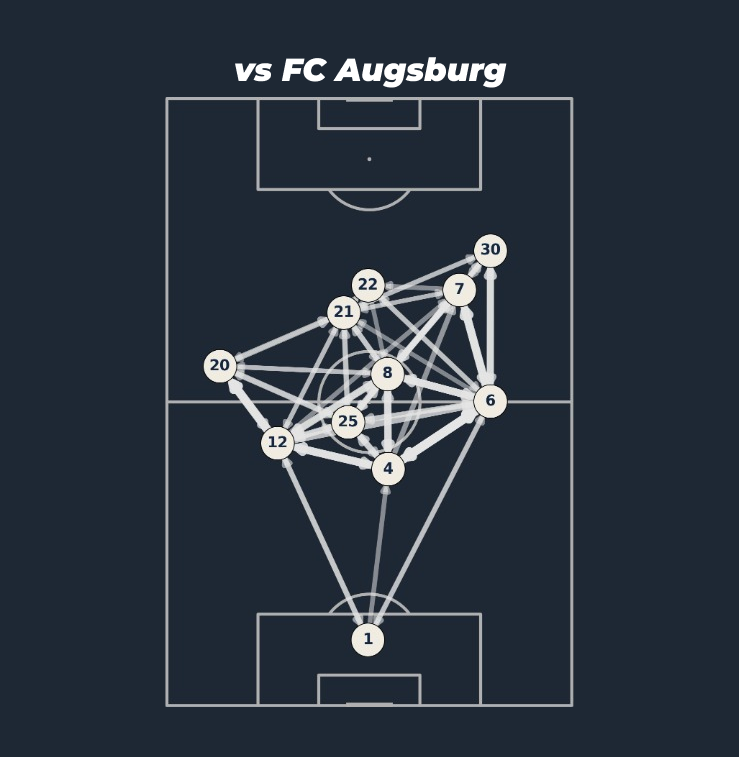


Moreover, the German team doesn't rely solely on movement and masterful passing to score goals this season, since approximately 10% of all goals scored by Xabi Alonso's team have come from set-pieces. Additionally, goals from counter-attacks are also common for the German side when necessary.

Final third of the field
The final third of the German team's attack is almost unpredictable. The advance of the wing-backs through the flanks mixed with midfielders infiltrating the box, along with a bit of accurate long-range shooting, create Xabi Alonso's magical formula for the team's incredible effectiveness. Thus, a statistic that demonstrates the unpredictability of the team led by the Spanish maestro is the percentage of attacks from each offensive third of the field, with the left, middle, and right accounting for 33%, 34%, and 33% respectively.Such offensive prowess not only leads to a flurry of goals and chances created for the German team but also contributes to the team's unbeaten streak, which, when being behind on the scoreboard, always finds a way, often through the tactics taught by Xabi Alonso, combined with a bit of luck, to score goals and maintain their unbeaten record intact for all season.
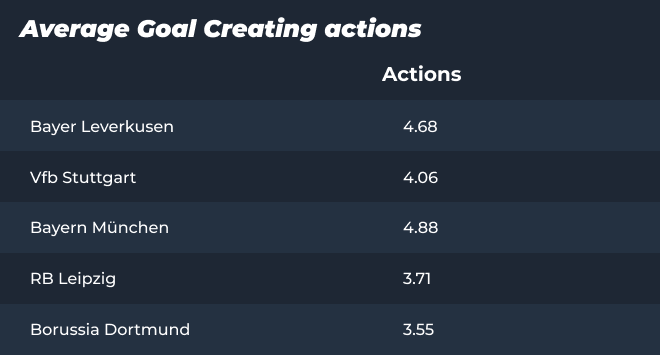

Weakness
Due to the relational play, if the team loses the ball in the attacking side and fails apply quick pressure, the opponent has a lot of space on the flanks of the field (where the full-backs should be), since the players concentrate in a compressed manner for effective passing combinations and triangles. However, if the midfielders in transition cover the flanks, the central area becomes weakened and opportunities arise for the opponent. The system relies entirely on the players' perfection and minimizing errors. An example of this was observed in the away game against Qarabag in the UEFA Europa League, where both goals conceded were due to possession losses and effective counter-attacks by the Azerbaijani team.

Conclusion
It is evident that Xabi Alonso has blended various influences and added his own product to create a team capable of an unbeaten performance in the Bundesliga. However, one of the key aspects of this team is the individuality of each player, who has fit into the Spanish coach's system while incorporating their own unique playing styles. When facing Xabi Alonso in tactical chess, one doesn't see his pieces as knights, towers, or pawns, but rather as twenty-four players with different characteristics that change the German team's playing style. These players are the reason behind the team's immense success this season and the singularity of this squad that has captivated the world. In the next post, we will analyze the evolution of these players and the team, leading to what is now known as the first team to win the first unbeaten Bundesliga title.Enjoy Reading This Article?
Here are some more articles you might like to read next: